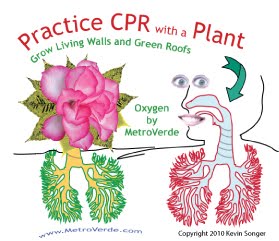 |
| Routine green roof maintenance and hurricane inspections are important for Florida Green Roofs |
At a minimum, we recommend;
- No large trees on a roof.
- Small shrubs and small trees may be used successfully depending upon the final design. This may seem like a common-sense guideline but people try to put all types of tall, large trees on patio or garden roofs. During a 130 mph cyclone, the tree may be blown over and may cause damage from the fall against the structure or to the street below. It may also become airborne if the winds are strong enough. Growing up in Hialeah I saw plenty of hurricanes come through our area and witnessed first hand the power of these storm events.
- Anything and everything on a roof should be permanently attached.
- Walkways should be constructed from a permanently attached TPO, EDPM or other mat and permanently affixed to the roof.
- No loose chairs, tables or other items should be present. If you wish to have a chair and table stay on a roof during a cyclone, they must be permanently attached.
- All green roof components must be permanently attached to the structure.
- Any trays, plastics, pots, containers or other green roof components must be permanently attached to the building structure. Florida Building Code does not allow for loose items to be installed on a roof - they must be attached.
- Green Roof Irrigation components must be permanently attached to the roof.
- Make sure all tools and gardening utensils are picked up and put away.
- It is very easy to forget the pair of shears, scissors or pliers on a roof. Remember what you were using and where you liad them.
- Plant selection should be focused on those species that have historically survived cyclone and hurricane incidents. There are several good books available at most bookstores here in Florida on proper cyclone resistent landscaping and many resources on the web, such as the Brevard County Landscaping Guide for Hurricane Areas.
- Check on the NOAA National Hurricane Center website daily. The NHC webpage is a wonderful resource, full of links to climatic data.
Always use a green roof design or green roof system already proven in actual field trials with hurricane simulation testing. Watching a green roof blow off during a storm is an avoidable event. Due diligence upfront and preparedness is important for green roofs in hurricane prone and cyclone impacted areas.



































